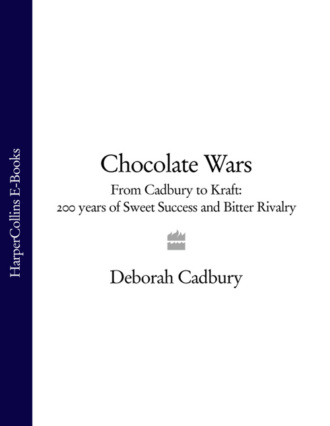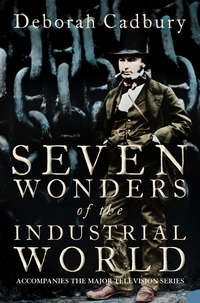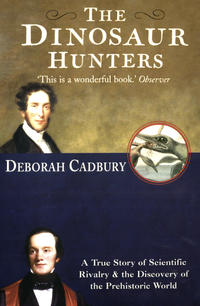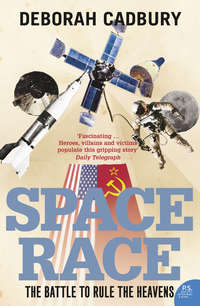
Полная версия
Chocolate Wars: From Cadbury to Kraft: 200 years of Sweet Success and Bitter Rivalry
Not long after this, George Cadbury returned to Birmingham, although he had barely completed three years as an apprentice. Perhaps he was fired up by seeing Henry Rowntree start his new venture, and was eager to begin making his own way. But it also seems likely that John was well aware of his third son’s ability and dedication, and needed his help.
To the employees at Bridge Street the two young Cadbury brothers were curiously ‘alike and unalike’. Richard was seen as ‘bright and happy with a sunny disposition’. He claimed he would be happy simply to rescue the business and turn it around to make a few hundred pounds a year. George was much more driven. In the words of his biographer, Alfred Gardiner, he had ‘more of an adventurer’s instinct . . . The channel of his mind was narrower and the current swifter.’ Despite his ambition, he could see no simple solution to the business’s problems. As the brothers deliberated during the spring of 1861 in the gloomy Bridge Street factory, the prospect seemed a dismal one. From their cramped office they could see the empty carts banked up in the yard awaiting orders. It was not immediately obvious what they could do that their father and uncle had not already tried.
The great hope, of course, was to come up with a breakthrough product. They did in fact have something in mind that their father had been working on before family difficulties drained his energy. It was a product very much of the moment, with healthful overtones, called Iceland Moss. The manufacturing process involved blending the fatty chocolate bean with an ingredient that was thought to improve health: lichen. It was then fashioned into a bar of cocoa that could be grated to form a nutritious drink. Richard had a flair for design, and could see the possibilities for launching Iceland Moss. It would be eye-catchingly displayed in bright yellow packaging with black letters that boldly proclaimed the addition of lichen, complete with the image of a reindeer to show how different it was from anything else on the market. He and George hoped to promote the health-giving properties of Iceland Moss, but would the untried combination of fluffy-textured lichen and fatty cocoa bean excite the English palate?
Apart from developing new products, the brothers also had to find new customers. Their father had only one salesman, known at the time as a ‘traveller’. His name was Dixon Hadaway, and he covered a vast swathe of the country, from Rugby in the south far up into the Scottish Highlands, visiting grocers’ shops to promote the company’s variety of cocoa wares. He took advantage of the new railway to cover the long distances between towns, but was often obliged to travel by pony and trap or even on foot. Despite the challenges of getting around, Dixon Hadaway was evidently determined to keep up appearances, and was always smartly attired with a tall top hat and dark tweed coat, although it was invariably crumpled from long hours of travelling. It seems he was appreciated by his customers, who claimed that he was so punctual that they could set their clocks by his visits. But punctuality and enthusiasm alone were not enough to win new orders. People could not be expected to buy Cadbury’s goods if they had never heard of them. George was clear: they needed more capital to fund a sales team.
To finance this, the brothers discussed how to manage the business more efficiently. Their solution was to return to their Puritanical roots: ‘work, and again work, and always more work’. George enthusiastically planned to cut all indulgence from his life: games, outings, music, every luxury would go. Every penny he earned would be ploughed back into the business. This was harder for Richard, who was planning to marry in July.
A photograph survives of Richard’s fiancée, Elizabeth Adlington, whose classic good looks are evident in spite of her serious expression and the limited scope permitted for the enhancement of feminine Quaker beauty. Her face appears unadorned, her hair parted down the middle and pulled back severely. She wears a full skirt and crino-line, covered by a long black cloak and dark bonnet – Quaker forefathers deeming this quite sufficient adornment to attract a male. Richard was drawn to her ‘bright and vivacious’ manner. In preparation for bringing home a wife, he had purchased a house on Wheeley’s Road, about two miles from the factory. Spare moments were spent creating a garden, transferring cuttings of his favourite plants from the rockery in his father’s garden. ‘My little home is beginning to look quite charming now it is nearly completed,’ he told his youngest brother Henry. There was just the furniture to buy before the wedding.
During the spring of 1861 the tone of the brothers’ discussion changed. As Quakers, they were accustomed to finding answers in silent prayer. They had a duty to their workforce, and there were family obligations to consider. Since their mother had died, their sister Maria had taken her place, caring for the younger members of the family. Now their father was in urgent need of help. They too must listen to the clear voice of conscience, mindful of their debt to man and God. They too must endeavour to do their best. Whatever their misgivings, they had no real choice. In April the two young brothers took over the running of the factory.
There was one last hope. They had each inherited £4,000 from their mother. Determined to save the family dream of a chocolate factory, they staked their inheritance down to the last penny. If they failed to turn the business around before the capital was gone, they would close the factory.
Конец ознакомительного фрагмента.
Текст предоставлен ООО «ЛитРес».
Прочитайте эту книгу целиком, купив полную легальную версию на ЛитРес.
Безопасно оплатить книгу можно банковской картой Visa, MasterCard, Maestro, со счета мобильного телефона, с платежного терминала, в салоне МТС или Связной, через PayPal, WebMoney, Яндекс.Деньги, QIWI Кошелек, бонусными картами или другим удобным Вам способом.






